Search the Blog
Categories
- Books & Reading
- Broadband Buzz
- Census
- Education & Training
- General
- Grants
- Information Resources
- Library Management
- Nebraska Center for the Book
- Nebraska Memories
- Now hiring @ your library
- Preservation
- Pretty Sweet Tech
- Programming
- Public Library Boards of Trustees
- Public Relations
- Talking Book & Braille Service (TBBS)
- Technology
- Uncategorized
- What's Up Doc / Govdocs
- Youth Services
Archives
Subscribe
Author Archives: Mary Sauers
What’s Up Doc? New State Agency Publications at the Nebraska Library Commission
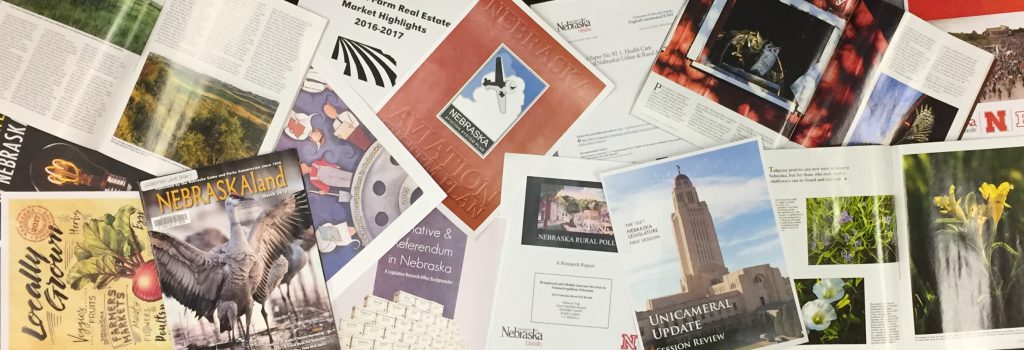
New state agency publications have been received at the Nebraska Library Commission for July and August 2020. Included are reports from the Nebraska Abstracters Board of Examiners, the Nebraska State Board of Public Accountancy, the Nebraska Accountability and Disclosure Commission, the Nebraska Commission for the Deaf and Hard of Hearing, and new books from the University of Nebraska Press, to name a few.
Most items, except the books from the University of Nebraska Press, are available for immediate viewing and printing by clicking on the highlighted link above, or directly in the .pdf below. You can read synopses of the books received from the University of Nebraska Press in the Book Briefs blogposts.
The Nebraska Legislature created the Nebraska Publications Clearinghouse in 1972, a service of the Nebraska Library Commission. Its purpose is to collect, preserve, and provide access to all public information published by Nebraska state agencies. By law (State Statutes 51-411 to 51-413) all Nebraska state agencies are required to submit their published documents to the Clearinghouse. For more information, visit the Nebraska Publications Clearinghouse page, contact Mary Sauers, Government Information Services Librarian; or contact Bonnie Henzel, State Documents Staff Assistant.
Friday Reads: The Lending Library, by Aliza Fogelson

What would you do if your town library closed for renovations, and the nearest library is an hour’s drive away? Read The Lending Library, by Aliza Fogelson to find out what one women did in just such a situation…
When the Chatsworth library closes indefinitely, Dodie Fairisle loses her sanctuary. How is a small-town art teacher supposed to cope without the never-ending life advice and enjoyment that books give her? Well, when she’s as resourceful and generous as Dodie, she turns her sunroom into her very own little lending library.
At first just a hobby, this lit lovers’ haven opens up her world in incredible ways. She knows books are powerful, and soon enough they help her forge friendships between her zany neighbors—and attract an exciting new romance.
But when the chance to adopt an orphaned child brings Dodie’s secret dream of motherhood within reach, everything else suddenly seems less important. Finding herself at a crossroads, Dodie must figure out what it means to live a full, happy life. If only there were a book that could tell her what to do…
I read The Lending Library, by Aliza Fogelson, in the Kindle format, and thoroughly enjoyed it. This is a lovely debut novel that teaches us how important libraries are to individuals, families, friends, and communities. Definitely an excellent read!
Book Briefs: New University of Nebraska Press Books at the Nebraska Publications Clearinghouse

The Nebraska Publications Clearinghouse receives documents every month from all Nebraska state agencies, including the University of Nebraska Press (UNP). Each month we will be showcasing the UNP books that the Clearinghouse receives. UNP books, as well as all Nebraska state documents, are available for checkout by libraries and librarians, for their patrons, in Nebraska.
Here are the UNP books the Clearinghouse received in May and June 2020:
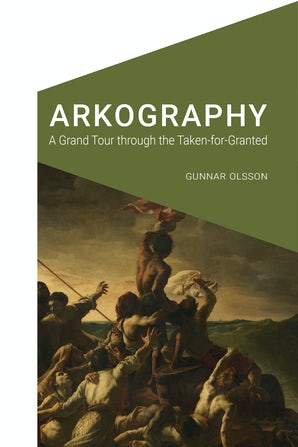
Arkography : A Grand Tour Through the Taken-for-Granted Gunnar Olsson (Series: Cultural Geographies + Rewriting the Earth)
In this fascinating text Gunnar Olsson tells the story of an arkographer, who with Pallas Athene’s blessings, travels down the Red River Valley, navigates the Kantian Island of Truth, and takes a house-tour through the Crystal Palace, the latter edifice an imagination grown out of Gunnael Jensson’s sculpture Mappa Mundi Universalis. This travel story carries the arkographer from the oldest creation epics extant to the power struggles of today—nothing less than a codification of the taken-for-granted, a mapping of the no-man’s-land between the five senses of the body and the sixth sense of culture. By constantly asking how we are made so obedient and predictable, the explorer searches for the present-day counterparts to the biblical ark, the chest that held the commandments and the rules of behavior that came with them—hence the term “arkography,” a word hinting at an as-yet-unrecognized discipline.
In Arkography Olsson strips bare the governing techniques of self-declared authorities, including those of the God of the Old Testament and countless dictators, the latter supported by a horde of lackeys often disguised as elected representatives and governmental functionaries. From beginning to end, Arkography is an illustration of how every creation epic is a variation on the theme of chaos turning into cosmic order. A palimpsest of layered meanings, a play of things and relations, identity and difference. One and many, you and me.
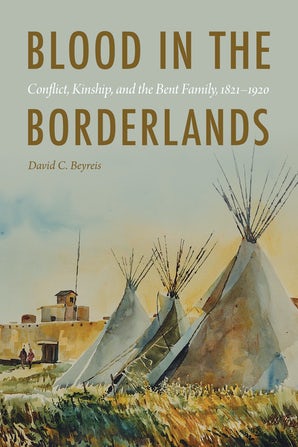
Blood in the Borderlands : Conflict, Kinship, and the Bent Family, 1821-1920 David C. Beyreis
The Bents might be the most famous family in the history of the American West. From the 1820s to 1920 they participated in many of the major events that shaped the Rocky Mountains and Southern Plains. They trapped beaver, navigated the Santa Fe Trail, intermarried with powerful Indian tribes, governed territories, became Indian agents, fought against the U.S. government, acquired land grants, and created historical narratives.
The Bent family’s financial and political success through the mid-nineteenth century derived from the marriages of Bent men to women of influential borderland families—New Mexican and Southern Cheyenne. When mineral discoveries, the Civil War, and railroad construction led to territorial expansions that threatened to overwhelm the West’s oldest inhabitants and their relatives, the Bents took up education, diplomacy, violence, entrepreneurialism, and the writing of history to maintain their status and influence.
In Blood in the Borderlands David C. Beyreis provides an in-depth portrait of how the Bent family creatively adapted in the face of difficult circumstances. He incorporates new material about the women in the family and the “forgotten” Bents and shows how indigenous power shaped the family’s business and political strategies as the family adjusted to American expansion and settler colonist ideologies. The Bent family history is a remarkable story of intercultural cooperation, horrific violence, and pragmatic adaptability in the face of expanding American power.
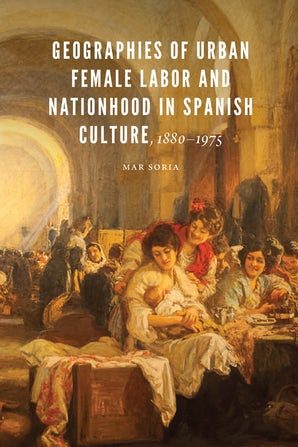
Geographies of Urban Female Labor and Nationhood in Spanish Culture, 1880-1975 Mar Soria (Series: New Hispanisms)
Mar Soria presents an innovative cultural analysis of female workers in Spanish literature and films. Drawing from nation-building theories, the work of feminist geographers, and ideas about the construction of the marginal subject in society, Soria examines how working women were perceived as Other in Spain from 1880 to 1975.
By studying the representation of these marginalized individuals in a diverse array of cultural artifacts, Soria contends that urban women workers symbolized the desires and anxieties of a nation caught between traditional values and rapidly shifting socioeconomic forces. Specifically, the representation of urban female work became a mode of reinforcing and contesting dominant discourses of gender, class, space, and nationhood in critical moments after 1880, when social and economic upheavals resulted in fears of impending national instability. Through these cultural artifacts Spaniards wrestled with the unresolved contradictions in the gender and class ideologies used to construct and maintain the national imaginary.
Whether for reasons of inattention or disregard of issues surrounding class dynamics, nineteenth- and twentieth-century Spanish literary and cultural critics have assumed that working women played only a minimal role in the development of Spain as a modern nation. As a result, relatively few critics have investigated cultural narratives of female labor during this period. Soria demonstrates that without considering the role working women played in the construction and modernization of Spain, our understanding of Spanish culture and life at that time remains incomplete.

Matters of Justice : Pueblos, the Judiciary, and Agrarian Reform in Revolutionary Mexico Helga Baltenmann (Series: The Mexican Experience)
After the fall of the Porfirio Díaz regime, pueblo representatives sent hundreds of petitions to Pres. Francisco I. Madero, demanding that the executive branch of government assume the judiciary’s control over their unresolved lawsuits against landowners, local bosses, and other villages. The Madero administration tried to use existing laws to settle land conflicts but always stopped short of invading judicial authority.
In contrast, the two main agrarian reform programs undertaken in revolutionary Mexico—those implemented by Emiliano Zapata and Venustiano Carranza—subordinated the judiciary to the executive branch and thereby reshaped the postrevolutionary state with the support of villagers, who actively sided with one branch of government over another.
In Matters of Justice Helga Baitenmann offers the first detailed account of the Zapatista and Carrancista agrarian reform programs as they were implemented in practice at the local level and then reconfigured in response to unanticipated inter- and intravillage conflicts. Ultimately, the Zapatista land reform, which sought to redistribute land throughout the country, remained an unfulfilled utopia. In contrast, Carrancista laws, intended to resolve quickly an urgent problem in a time of war, had lasting effects on the legal rights of millions of land beneficiaries and accidentally became the pillar of a program that redistributed about half the national territory.

Out of the Crazywoods Cheryl Savageau (Series: American Indian Lives)
Out of the Crazywoods is the riveting and insightful story of Abenaki poet Cheryl Savageau’s late-life diagnosis of bipolar disorder. Without sensationalizing, she takes the reader inside the experience of a rapid-cycling variant of the disorder, providing a lens through which to understand it and a road map for navigating the illness. The structure of her story—impressionistic, fragmented—is an embodiment of the bipolar experience and a way of perceiving the world.
Out of the Crazywoods takes the reader into the euphoria of mania as well as its ugly, agitated rage and into “the lying down of desire” that is depression. Savageau articulates the joy of being consort to a god and the terror of being chased by witchcraft, the sound of voices that are always chattering in your head, the smell of wet ashes that invades your home, the perception that people are moving in slow motion and death lurks at every turnpike, and the feeling of being loved by the universe and despised by everyone you’ve ever known.
Central to the journey out of the Crazywoods is the sensitive child who becomes a poet and writer who finds clarity in her art and a reason to heal in her grandchildren. Her journey reveals the stigma and the social, personal, and economic consequences of the illness but reminds us that the disease is not the person. Grounded in Abenaki culture, Savageau questions cultural definitions of madness and charts a path to recovery through a combination of medications, psychotherapy, and ceremony.
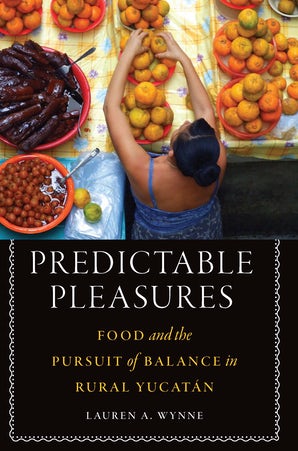
Predictable Pleasures : Food and the Pursuit of Balance In Rural Yucatan Lauren A Wynne (Series: At Table)
The pursuit of balance pervades everyday life in rural Yucatán, Mexico, from the delicate negotiations between a farmer and the neighbor who wants to buy his beans to the careful addition of sour orange juice to a rich plate of eggs fried in lard. Based on intensive fieldwork in one indigenous Yucatecan community, Predictable Pleasures explores the desire for balance in this region and the many ways it manifests in human interactions with food. As shifting social conditions, especially a decline in agriculture and a deepening reliance on regional tourism, transform the manners in which people work and eat, residents of this community grapple with new ways of surviving and finding pleasure.
Lauren A. Wynne examines the convergence of food and balance through deep analysis of what locals describe as acts of care. Drawing together rich ethnographic data on how people produce, exchange, consume, and talk about food, this book posits food as an accessible, pleasurable, and deeply important means by which people in rural Yucatán make clear what matters to them, finding balance in a world that seems increasingly imbalanced.
Unlike many studies of globalization that point to the dissolution of local social bonds and practices, Predictable Pleasures presents an array of enduring values and practices, tracing their longevity to the material constraints of life in rural Yucatán, the deep historical and cosmological significance of food in this region, and the stubborn nature of bodily habits and tastes.
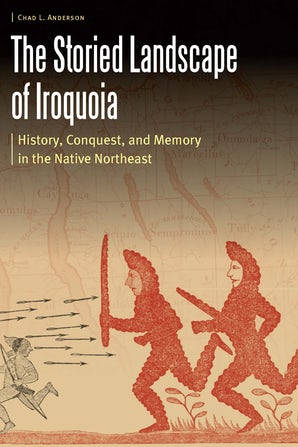
The Storied Landscape of Iroquoia : History, Conquest, and Memory in the Native Northeast Chad L. Anderson (Series: Borderlands and Transcultural Studies)
The Storied Landscape of Iroquoia explores the creation, destruction, appropriation, and enduring legacy of one of early America’s most important places: the homelands of the Haudenosaunees (also known as the Iroquois Six Nations). Throughout the late seventeenth, eighteenth, and early nineteenth centuries of European colonization the Haudenosaunees remained the dominant power in their homelands and one of the most important diplomatic players in the struggle for the continent following European settlement of North America by the Dutch, British, French, Spanish, and Russians. Chad L. Anderson offers a significant contribution to understanding colonialism, intercultural conflict, and intercultural interpretations of the Iroquoian landscape during this time in central and western New York.
Although American public memory often recalls a nation founded along a frontier wilderness, these lands had long been inhabited in Native American villages, where history had been written on the land through place-names, monuments, and long-remembered settlements. Drawing on a wide range of material spanning more than a century, Anderson uncovers the real stories of the people—Native American and Euro-American—and the places at the center of the contested reinvention of a Native American homeland. These stories about Iroquoia were key to both Euro-American and Haudenosaunee understandings of their peoples’ pasts and futures.
For more information about The Storied Landscape of Iroquoia, visit storiedlandscape.com.
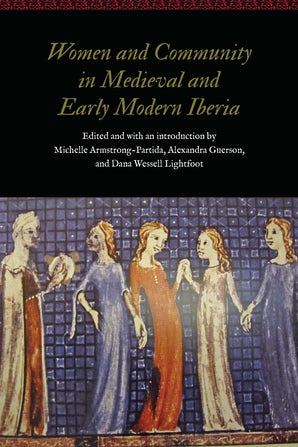
Women and Community in Medieval and Early Modern Iberia Edited and with an introduction by Michelle Armstrong-Partida, Alexandra Guerson, and Dana Wessell Lightfoot ; Series: Women and Gender in the Early Modern World
Women and Community in Medieval and Early Modern Iberia draws on recent research to underscore the various ways Iberian women influenced and contributed to their communities, engaging with a broader academic discussion of women’s agency and cultural impact in the Iberian Peninsula. By focusing on women from across the socioeconomic and religious spectrum—elite, bourgeois, and peasant Christian women, Jewish, Muslim, converso, and Morisco women, and married, widowed, and single women—this volume highlights the diversity of women’s experiences, examining women’s social, economic, political, and religious ties to their families and communities in both urban and rural environments.
Comprised of twelve essays from both established and new scholars, Women and Community in Medieval and Early Modern Iberia showcases groundbreaking work on premodern women, revealing the complex intersections between gender and community while highlighting not only relationships of support and inclusion but also the tensions that worked to marginalize and exclude women.
**All synopses courtesy of University of Nebraska Press (https://www.nebraskapress.unl.edu/)
What’s Up Doc? New State Agency Publications at the Nebraska Library Commission

New state agency publications have been received at the Nebraska Library Commission for May and June 2020. Included are audit reports from the Nebraska Auditor of Public Accounts, reports from the Nebraska Department of Economic Development, and new books from the University of Nebraska Press, to name a few.
Most items, except the books from the University of Nebraska Press, are available for immediate viewing and printing by clicking on the highlighted link above, or directly in the .pdf below. You can read synopses of the books received from the University of Nebraska Press in the Book Briefs blogposts.
The Nebraska Legislature created the Nebraska Publications Clearinghouse in 1972, a service of the Nebraska Library Commission. Its purpose is to collect, preserve, and provide access to all public information published by Nebraska state agencies. By law (State Statutes 51-411 to 51-413) all Nebraska state agencies are required to submit their published documents to the Clearinghouse. For more information, visit the Nebraska Publications Clearinghouse page, contact Mary Sauers, Government Information Services Librarian; or contact Bonnie Henzel, State Documents Staff Assistant.
Free ALA webinar: “Last Chance for a Complete Count”

| ALA is offering a webinar for library staff: 2020 Census: Last Chance for a Complete Count, on July 8 at 2 pm ET. Registration is free. After the session, the recording will be posted at ala.org/census. New guide on adapting census outreach in response to COVID-19: ALA released a new publication, “Libraries and the 2020 Census: Adapting Outreach in Response to COVID-19 (PDF).” The free guide explains changes to the 2020 Census process and highlights opportunities for libraries to adapt census outreach activities. Check your community’s response rate: How does your area compare in its response rate to date? Which neighborhoods are lagging behind? Find current data to inform your outreach and messages on the 2020 Census Response Rate Map or the Census 2020 Hard to Count Map. Share your event on the Census Counts calendar: Is your library planning a 2020 Census event (including virtual events)? Submit it to the national Census Counts calendar. Check the calendar for other events from partners in your community. |
Four Ways New Technology Is Revolutionizing the 2020 Census

From scribbled answers in 1790 to online responses in 2020, innovation has always been part of the Census. The Census Bureau has always been a leader in using, adapting and developing new technologies, but the 2020 Census will be the most sophisticated and high tech yet.
The census began in 1790 with collected information handwritten by U.S. Marshals visiting outposts in every corner of the new nation. Every decade since, the ways the U.S. Census Bureau has tried to meet its goal of counting every person living in the United States have undergone changes as dramatic as the growth of the nation itself.
Through the centuries, the decennial count progressed from in-person collections of handwritten answers to mass mailings of paper questionnaires in 1970. Among other changes along the way: creation of an electrical punch card tabulator for the 1890 Census and the first use by a government agency of the world’s first modern computer – the UNIVAC 1 – for the 1950 Census. It was developed by engineers John W. Mauchly and J. Presper Eckert, whose corporation was a division of Remington Rand.
In the previous century, Herman Hollerith, a former Census Office employee, invented a punch card tabulating machine used by the Census Bureau from the 1890 Census forward. Hollerith founded the Tabulating Machine Company, which eventually became International Business Machines (IBM).
America Counts spoke with Robert Colosi, a mathematical statistician in the Census Bureau’s Decennial Statistics Studies Division, about ways technology is revolutionizing the census.
He shared four specific changes that have had a major impact on how the Census Bureau counts everyone once, only once, and in the right place.
Innovation 1: Using Satellite Imagery to Check Addresses
Before the Census Bureau can count every person in the country, it must first collect addresses for every housing unit. One way the Census Bureau uses this address list is to mail census materials, including invitations to respond online, by phone or by mail.
Census Bureau employees used to “canvass” neighborhoods in person, jotting down new addresses and correcting old ones on paper.
This long-running operation, known as Address Canvassing, is one of the ways the Census Bureau updates its Master Address File or MAF. The Census Bureau also works with the United States Postal Service (USPS) to confirm already existing addresses on file.
Address canvassing was costly and time-consuming. Employees traveled a total of 137 million miles to update the MAF before the 2010 Census.
“The number of miles we traveled was astronomical,” Colosi said. “We’re not going to do that for the 2020 Census.”
In 2015, the Census Bureau began using aerial images from a network of satellites.
The Census Bureau developed computer software that allows employees in offices to compare satellite images from 2010 to new ones taken in real time. This helps them identify new houses, apartment buildings and other units to verify in the traditional Address Canvassing operation.
Thanks to the new In-Office Address Canvassing system, census workers reviewed 100% of all addresses in the United States for the 2020 Census and validated 65% in the office, removing them from the in-field workload.
That means workers needed to canvas fewer neighborhoods in person, saving time and money.
Address listers or canvassers hit the streets in August 2019 and completed the operation two months later, on track for the 2020 Census.
Innovation 2: Introducing Online Self-Response
The 2020 Census is the first time everyone has the option to respond to the census online as well as by phone or mail.
The Census Bureau has an Internet Self-Response tool designed to make it easy to complete the questionnaire online and keep responses secure. Directions for responding online will be included in letters, postcards and other mailings sent to most homes beginning in mid-March.
Every response submitted on the internet is encrypted. That means data are changed into a code that only Census Bureau data analysts can read. Responses travel through a secure cloud computer network and the Census Bureau locks them in a “digital vault”.
The Internet Self-Response instrument, the website for completing the census online, is available in English and 12 other languages.
Census Bureau employees, called census response representatives will also provide computers and tablets for access to the Internet Self-Response tool at places like libraries, community centers, health care centers and places of worship. This is particularly helpful in rural and other areas with limited or no internet access.
Innovation 3: Introducing Mobile Devices to Enumeration
From collecting census responses and job applications to storing questionnaires, the Census Bureau has used millions of pieces of paper to gather and file information. Now it relies much more on technology – and much less on paper.
In 2020, census takers who go door-to-door to help people respond will collect information on smartphones using a custom application created by the Census Bureau.
“The Systems Engineering and Integration Team created 52 systems in our ‘system of systems,’” Colosi said. “There’s a whole group of systems related to that one contract of enumeration and operations control. All of it was built by Census Bureau staff and contractors.”
To protect privacy, we encrypt all data and devices require two-factor authentication to be unlocked.
When a device connects to the internet, encrypted data immediately transmits to the Census Bureau’s digital vault – and is no longer on the device. Encrypted data are only stored on the devices until they connect to the internet.
Software in the smartphones also provides specific routes for census takers to follow to visit homes. Optimizing routes in this way helps census takers do their jobs more efficiently.
If a device is lost or stolen, the Census Bureau will remotely wipe it clean of all applications and information.
Innovation 4: New Ways to Protect Data
The Census Bureau is the leading source of quality data about the nation’s people and economy in its many surveys and programs, including the 2020 Census.
Opportunities to share and protect its data continue to grow with technology and innovation, particularly through data mashups.
Data mashups are algorithms that combine different data sources to expand graphical understanding of the data but can also find the origin of a particular set of data.
To protect against that, the Census Bureau has developed processes to protect its data from people who might try to make such mashups. Its Disclosure Avoidance System helps prevent improper disclosure of data. This addition is one of several advances the Census Bureau has made to safeguard an individual’s data.
“When we produced products in the old days, we didn’t have super high-tech and savvy users,” Colosi said. “The idea of computing data mashups to try and combine different data sources to find individual responses was not common. Now it is.”
All responses to the 2020 Census are confidential and protected by law. Title 13 of the Federal Code prohibits the Census Bureau from publishing or disclosing any private information, including names, addresses and telephone numbers.
“Our cybersecurity meets the latest, highest standards for protecting your information,” Census Bureau Chief Information Officer Kevin Smith said. “We work with industry experts to continually review and refine our approach to make sure we are staying ahead of threats and ensuring quick response. From the moment we collect your responses, our goal — and legal obligation — is to keep them safe.”
Census Bureau employees take an oath to keep your answers confidential. Violators face up to five years in prison and $250,000 in fines.
Posted in Books & Reading, Census, Education & Training, General, Information Resources, Technology, What's Up Doc / Govdocs
Tagged census
Leave a comment
Census Bureau Launches COVID-19 Data Hub
  The U.S. Census Bureau has released a new resource page on Census.gov to help federal The U.S. Census Bureau has released a new resource page on Census.gov to help federal agencies, businesses, and communities make decisions related to the COVID-19 pandemic. Similar to the Census Bureau’s resources pages created during natural disasters, this resource page includes information on population demographics, economic indicators and businesses. Learn More It features a new interactive data hub that centralizes already-released data from the American Community Survey and the County Business Patterns program to facilitate users’ access to data useful in pandemic-related decision making. The data hub, released as a beta version, will be updated periodically as the situation changes and as feedback is received from users.  You can sign up for COVID-19 Data Hub Updates here. You can sign up for COVID-19 Data Hub Updates here.  |
Posted in Books & Reading, Census, Education & Training, General, Information Resources, Technology, What's Up Doc / Govdocs
Tagged census
Leave a comment
2020 Census Updates
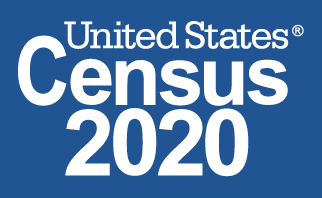
Nebraska is still FIRST in Census responses in our region! Here’s all the latest news from the Census Bureau:
Posted in Books & Reading, Census, Education & Training, General, Information Resources, What's Up Doc / Govdocs
Tagged census
Leave a comment
What’s Up Doc? New State Agency Publications at the Nebraska Library Commission

New state agency publications have been received at the Nebraska Library Commission for March and April 2020. Included are annual reports from a variety of Nebraska state agencies, economic development reports from the Nebraska Public Power District, Audit reports from the Nebraska Auditor of Public Accounts, and new books from the University of Nebraska Press, to name a few.
Most items, except the books from the University of Nebraska Press, are available for immediate viewing and printing by clicking on the highlighted link above, or directly in the .pdf below. You can read synopses of the books received from the University of Nebraska Press in the Book Briefs blogposts.
The Nebraska Legislature created the Nebraska Publications Clearinghouse in 1972, a service of the Nebraska Library Commission. Its purpose is to collect, preserve, and provide access to all public information published by Nebraska state agencies. By law (State Statutes 51-411 to 51-413) all Nebraska state agencies are required to submit their published documents to the Clearinghouse. For more information, visit the Nebraska Publications Clearinghouse page, contact Mary Sauers, Government Information Services Librarian; or contact Bonnie Henzel, State Documents Staff Assistant.
Book Briefs: New University of Nebraska Press Books at the Nebraska Publications Clearinghouse

The Nebraska Publications Clearinghouse receives documents every month from all Nebraska state agencies, including the University of Nebraska Press (UNP). Each month we will be showcasing the UNP books that the Clearinghouse receives. UNP books, as well as all Nebraska state documents, are available for checkout by libraries and librarians, for their patrons, in Nebraska.
Here are the UNP books the Clearinghouse received in March and April 2020:
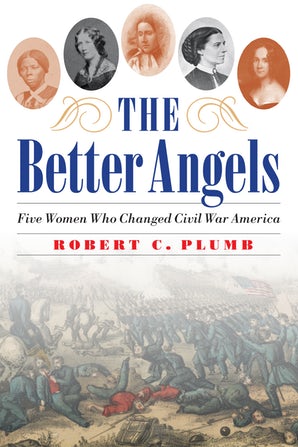
The Better Angels : Five Women Who Changed Civil War America Robert C. Plumb
Harriet Tubman, Harriet Beecher Stowe, Clara Barton, Julia Ward Howe, and Sarah Josepha Hale came from backgrounds that ranged from abject enslavement to New York City’s elite. Surmounting social and political obstacles, they emerged before and during the worst crisis in American history, the Civil War. Their actions became strands in a tapestry of courage, truth, and patriotism that influenced the lives of millions—and illuminated a new way forward for the nation.
In this collective biography, Robert C. Plumb traces these five remarkable women’s awakenings to analyze how their experiences shaped their responses to the challenges, disappointments, and joys they encountered on their missions. Here is Tubman, fearless conductor on the Underground Railroad, alongside Stowe, the author who awakened the nation to the evils of slavery. Barton led an effort to provide medical supplies for field hospitals, and Union soldiers sang Howe’s “Battle Hymn of the Republic” on the march. And, amid national catastrophe, Hale’s campaign to make Thanksgiving a national holiday moved North and South toward reconciliation.

Exodus ‘Gbenga Adeoba (Series: African Poetry Book Series)
Winner of the Sillerman First Book Prize for African Poetry, ‘Gbenga Adeoba’s collection Exodus focuses on forms of migration due to the slave trade, war, natural disasters, and economic opportunities.
Using the sea as a source of language and metaphor, Adeoba explores themes of memory, transition, and the intersections between the historic and the imagined. With great tenderness and power his poetry of empathy searches for meaning in sharply constructed images, creating scenes of making and unmaking while he investigates experiences of exile and displacement across time and place.
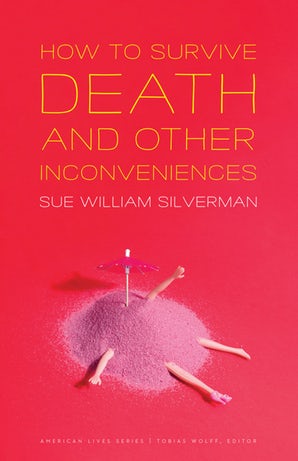
How to Survive Death and Other Inconveniences Sue William Silverman (Series: American Lives)
Many are haunted and obsessed by their own eventual deaths, but perhaps no one as much as Sue William Silverman. This thematically linked collection of essays charts Silverman’s attempt to confront her fears of that ultimate unknown. Her dread was fomented in part by a sexual assault, hidden for years, that led to an awareness that death and sex are in some ways inextricable, an everyday reality many women know too well.
Through gallows humor, vivid realism, and fantastical speculation, How to Survive Death and Other Inconveniences explores this fear of death and the author’s desire to survive it. From cruising New Jersey’s industry-blighted landscape in a gold Plymouth to visiting the emergency room for maladies both real and imagined to suffering the stifling strictness of an intractable piano teacher, Silverman guards her memories for the same reason she resurrects archaic words—to use as talismans to ward off the inevitable. Ultimately, Silverman knows there is no way to survive death physically. Still, through language, commemoration, and metaphor, she searches for a sliver of transcendent immortality.
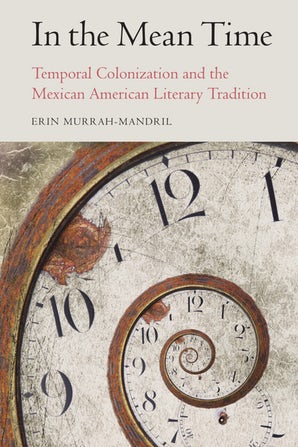
In the Mean Time : Temporal Colonization and the Mexican American Literary Tradition Erin Murrah-Mandril (Series: Postwestern Horizons)
The 1848 Treaty of Guadalupe Hidalgo, which transferred more than a third of Mexico’s territory to the United States, deferred full U.S. citizenship for Mexican Americans but promised, “in the mean time,” to protect their property and liberty. Erin Murrah-Mandril demonstrates that the U.S. government deployed a colonization of time in the Southwest to insure political and economic underdevelopment in the region and to justify excluding Mexican Americans from narratives of U.S. progress. In In the Mean Time, Murrah-Mandril contends that Mexican American authors challenged modern conceptions of empty, homogenous, linear, and progressive time to contest U.S. colonization.
Taking a cue from Latina/o and borderlands spatial theories, Murrah-Mandril argues that time, like space, is a socially constructed, ideologically charged medium of power in the Southwest. In the Mean Time draws on literature, autobiography, political documents, and historical narratives composed between 1870 and 1940 to examine the way U.S. colonization altered time in the borderlands.
Rather than reinforce the colonial time structure, early Mexican American authors exploited the internal contradictions of Manifest Destiny and U.S. progress to resist domination and situate themselves within the shifting political, economic, and historical present. Read as decolonial narratives, the Mexican American cultural productions examined in this book also offer a new way of understanding Latina/o literary history.
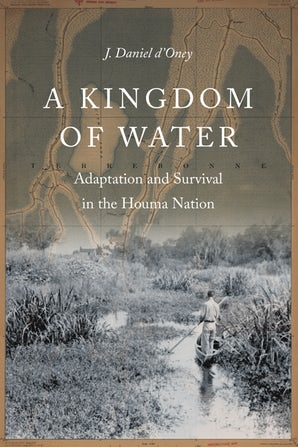
A Kingdom of Water : Adaptation and Survival in the Houma Nation J. Daniel d’Oney (Series: Indians of the Southeast)
A Kingdom of Water is a study of how the United Houma Nation in Louisiana successfully navigated a changing series of political and social landscapes under French, Spanish, British, and American imperial control between 1699 and 2005. After 1699 the Houma assimilated the French into their preexisting social and economic networks and played a vital role in the early history of Louisiana. After 1763 and Gallic retreat, both the British and Spanish laid claim to tribal homelands, and the Houma cleverly played one empire against the other.
In the early 1700s the Houma began a series of adaptive relocations, and just before the Louisiana Purchase in 1803 the nation began their last migration, a journey down Bayou Lafourche. In the early 1800s, as settlers pushed the nation farther down bayous and into the marshes of southeastern Louisiana, the Houma quickly adapted to their new physical environment. After the Civil War and consequent restructuring of class systems, the Houma found themselves caught in a three-tiered system of segregation. Realizing that education was one way to retain lands constantly under assault from trappers and oil companies, the Houma began their first attempt to integrate Terrebonne Parish schools in the early twentieth century, though their situation was not resolved until five decades later. In the early twenty-first century, the tribe is still fighting for federal recognition.

Sacrament of Bodies Romeo Oriogun (Series: African Poetry Book Series)
In this groundbreaking collection of poems, Sacrament of Bodies, Romeo Oriogun fearlessly interrogates how a queer man in Nigeria can heal in a society where everything is designed to prevent such restoration. With honesty, precision, tenderness of detail, and a light touch, Oriogun explores grief and how the body finds survival through migration.
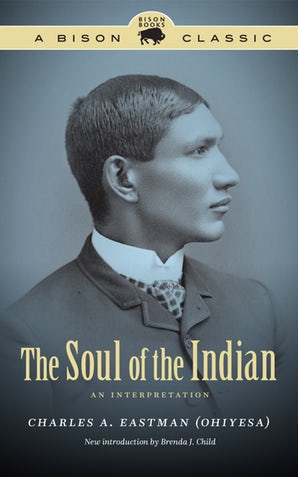
The Soul of the Indian : An Interpretation Charles A. Eastman (Ohiyesa) (Series: Bison Classic Editions)
The Soul of the Indian is Charles A. Eastman’s exploration and documentation of religion as he experienced it during the late nineteenth century. A Dakota physician and writer who sought to bring understanding between Native and non-Native Americans, Eastman (1858–1939) became one of the best-known Native Americans of his time and a significant intellectual figure whose clarity of vision endures today.
In a straightforward manner Eastman emphasizes the universal quality and personal appeal of his Dakota religious heritage. First published in 1911, The Soul of the Indian draws on his childhood teaching and ancestral ideals to counter the research written by outsiders who treated the Dakotas’ ancient worldviews chiefly as a matter of curiosity. Eastman writes with deep respect for his ancestors and their culture and history, including a profound reverence for the environment, animals, and plants. Though written more than a century ago, Eastman could be speaking to our own time with its spiritual confusion and environmental degradation. The new introduction by Brenda J. Child grounds this important book in contemporary studies.
**All synopses courtesy of University of Nebraska Press (https://www.nebraskapress.unl.edu/)
The 2020 Census is Still Going Strong!
2020 Census Infogram
Posted in Census, Education & Training, General, Information Resources, Technology, What's Up Doc / Govdocs
Tagged census
Leave a comment
2020 Census Operational Adjustments

The 2020 Census is underway and more households across America are responding every day. Over 70 million households have responded to date, representing over 48% of all households in America. In light of the COVID-19 outbreak, the U.S. Census Bureau is adjusting 2020 Census operations in order to:
• Protect the health and safety of the American public and Census Bureau employees.
• Implement guidance from federal, state and local authorities.
• Ensure a complete and accurate count of all communities.
The Census Bureau temporarily suspended 2020 Census field data collection activities in March. Steps are already being taken to reactivate field offices beginning June 1, 2020, in preparation for the resumption of field data collection operations as quickly as possible following June 1.
In-person activities, including all interaction with the public, enumeration, office work and processing activities, will incorporate the most current guidance to promote the health and safety of staff and the public. This will include recommended personal protective equipment (PPE) and social distancing practices.
Once 2020 Census data collection is complete, the Census Bureau begins a lengthy, thorough and scientifically rigorous process to produce the apportionment counts, redistricting information and other statistical data products that help guide hundreds of billions of dollars in public and private sector spending per year.
In order to ensure the completeness and accuracy of the 2020 Census, the Census Bureau is seeking statutory relief from Congress of 120 additional calendar days to deliver final apportionment counts.
Under this plan, the Census Bureau would extend the window for field data collection and self-response to October 31, 2020, which will allow for apportionment counts to be delivered to the President by April 30, 2021, and redistricting data to be delivered to the states no later than July 31, 2021.
Posted in Census, Education & Training, General, Information Resources, Technology, What's Up Doc / Govdocs
Tagged census
Leave a comment
American Democracy Project–Video Contest to Promote the 2020 Census
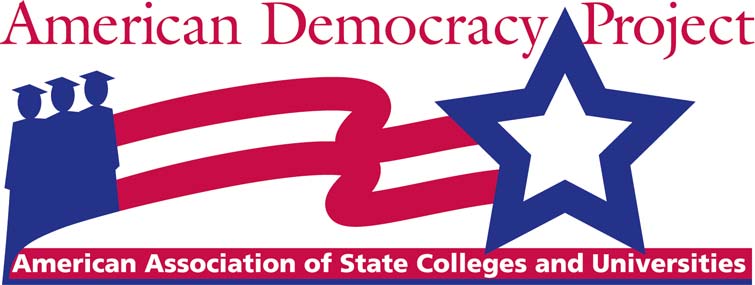
When: April 08, 2020 – April 24, 2020
Time:01:00 PM – 05:00 PM:
The American Democracy Project is sponsoring a video contest to promote awareness for the U.S. Census! Prizes will be awarded to 1st, 2nd, and 3rd place entries; all videos will be judged on accuracy, creativity, and use of visuals/sound. All entries should be submitted to adp@unk.edu by April 24, 2020.
For more instructions, visit https://docs.google.com/document/d/1z3uFwe4jtJgN25Ju2CAE-ovybZ-8UdMIvMFmfEtXrU8/edit?usp=sharing.
Good luck!
Contact:Lydia Behnk
(402) 843-6801
behnkll@lopers.unk.edu
Posted in Census, Education & Training, General, Information Resources, Programming, Technology, What's Up Doc / Govdocs
Tagged census
Leave a comment
Friday Reads: The Other Family, by Loretta Nyhan

“With a dissolving marriage, strained finances, and her life in flux, Ally Anderson longs for normal. Her greatest concerns, though, are the health problems of her young daughter, Kylie. Symptoms point to a compromised immune system, but every doctor they’ve seen has a different theory. Then comes hope for some clarity.
It’s possible that Kylie’s illness is genetic, but Ally is adopted. A DNA test opens up an entirely new path. And where it leads is a surprise: to an aunt Ally never knew existed. She’s a little wild, very welcoming, and ready to share more of the family history than Ally ever imagined.
Coping with a skeptical soon-to-be-ex husband, weathering the resistance of her adoptive mother, and getting maddeningly close to the healing Kylie needs, Ally is determined to regain control of her life. This is her chance to embrace uncertainty and the beauty of family – both the one she was born into and the one she chose.” (Audible)
This book caught my eye because I too was adopted, and as usual, I read and listened to it. I was caught up immediately in the story, and while there are some minor problems with the editing of the audio version, it still held my attention from start to finish.
There are many different ways, and reasons why, adoptees search for their biological families. In Ally’s case, she is desperately looking for answers to explain her daughter’s life-threatening allergic reactions. Ally is so desperate in fact, that she turns to an alternative approach: meditation and desensitization therapy. Through all of the anxiety and uncertainty regarding Kylie’s new treatment, Ally finds not only her “other family,” but her inner strength. That strength helps her resolve issues with her ex, her mom, and her ability to move forward with her life.
Definitely a good read!
Today, April 1st, 2020, is CENSUS DAY!

The official Census Day for the 2020 Census has finally arrived!
PLEASE respond to your invitation to participate in the 2020 Census!
Even though we are living in a different time right now, it is still vitally important that we all respond to the Census. For the next 10 years the results from the 2020 Census will determine how billions of dollars will be distributed back to the states, and how local, state, and federal government will be affected.
You can respond online, mail, and phone–so PLEASE respond to the 2020 Census today!
Posted in Census, General, Information Resources, Technology, What's Up Doc / Govdocs
Tagged census
Leave a comment
A History of the Census in the United States : Part 23
The Twenty-Third Census: Census Day was April 1, 2010.

Enumeration
The 2010 census questionnaire was one of the shortest in history – asking just 10 questions of all households in the United States and Island Areas related to name, gender, age, race, ethnicity, relationship, and whether you own or rent your home. Collection of data about education, housing, jobs, etc. collected by previous censuses long-form questionnaires are now collected by the U.S. Census Bureau’s annual American Community Survey.
In addition to the reduced number of questions, the Census Bureau announced it would count same-sex married couples in June 2009. When noting the relationship between household members, same-sex couples who are married could mark their spouses as being “Husband or wife”, the same response given by opposite-sex married couples. An “unmarried partner” option was available for couples (whether same-sex or opposite-sex) who were not married.
Marketing and Promotional Efforts
Following the success of Census 2000’s advertising, the 2010 census featured a $133 million, 4-month advertising campaign. Although officially beginning January 18, 2010, the advertising campaign debuted the night of January 17 during NBC’s Golden Globe Awards broadcast.
In total, the 2010 advertising campaign included television, radio, print, outdoor and the Internet advertising, produced in an unprecedented 28 languages. More than half of the budgeted advertising would target media consumed by minority and ethnic audiences. The Census Bureau anticipated that the campaign would reach the average person 42 times with messages about the importance of participating in the census.
From Super Bowl XLIV and the 2010 Winter Olympics, to popular primetime shows, the 2010 Census advertising campaign represented the most extensive and diverse outreach campaign in U.S. history. The advertising rollout also included updates on other outreach efforts, such as the Census in Schools program, “Portrait of America” Road Tour, and the national and regional partnership programs targeted at reaching hard-to-count populations.
Other key elements of the 2010 Census Integrated Communications Campaign included:
- A national road tour with 13 vehicles traveling to key events across the country, such as NASCAR races, the Super Bowl, and parades.
- A 2010 Census Web Site.
- “Teach Census Week” in schools nationwide in February, part of the Census in Schools program.
- Nationally broadcasted public service announcements airing nationwide.
- Outreach activities launched by national and local corporate, foundation, government, and nonprofit organizations.
Key 2010 Census Dates
September 26, 2005 – The Census Bureau awards a $500+ million contract to the Lockheed Martin Corporation for the 2010 Census Decennial Response Integration System (DRIS).
September 6, 2007 – The Census Bureau awarded its 2010 Census communications contract, worth an estimated $200 million, to Draftfcb of New York.
March 30, 2009 – The Census Bureau launches a massive operation to verify and update more than 145 million addresses as it prepares to mail out 2010 census questionnaires.
July 23, 2009 – The Census Bureau began printing 2010 Census questionnaires.
October 26, 2009 – The Census Bureau launches the 2010 Census Web Site.
January 17, 2010 – First 2010 Census television advertisement airs during NBC’s Golden Globe Awards broadcast.
January 18, 2010 – The 2010 census advertising campaign officially launches.
January 25, 2010 – Remote Alaska enumeration begins.
March 1, 2010 – 2010 census questionnaires begin arriving in mailboxes throughout the United States and Island Areas.
March 8, 2010 – Advance letters are mailed to 120 million addresses nationwide, notifying households that 2010 Census forms will be arriving March 15 -17.
April 1, 2010 – Census Day. Households are asked to supply data in their census questionnaire that is accurate as of April 1.
April 30, 2010 – Enumerators begin door-to-door operations to collect census data from households to follow up with households that either didn’t mail back their form or didn’t receive one.
July 30, 2010 – The toll-free telephone assistance line is closed, ending 2010 census data collection. More than 130,000 interviews were completed via the toll-free line.
August 10, 2010 – The Census Bureau announces that it will return $1.6 billion to the U.S. Treasury as a result of lower-than-expected census costs.
October 21, 2010 – The final 2010 census mail response rate is announced as 74 percent – matching Census 2000’s rate.
December 21, 2010 – The Census Bureau announces the 2010 population counts and delivers the apportionment counts to the president.
Further Information
- “The 2010 Decennial Census: Background and Issues,” Congressional Research Service, February 3, 2011.
Information provided from Census.gov
Posted in Books & Reading, Census, Education & Training, General, Information Resources, What's Up Doc / Govdocs
Tagged census
Leave a comment
A History of the Census in the United States : Part 22
The Twenty-Second Census: Census Day was April 1, 2000.
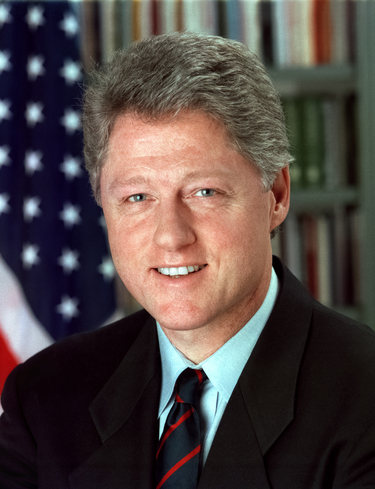
Enumeration
The short form contained only seven questions, the shortest census questionnaire since 1820. The long form asked 52 questions of approximately 1 in 6 households (approximately a 17 percent sample of the population). In previous censuses, responses to the race question were limited to a single category; in 2000, for the first time, respondents could check as many boxes as necessary to identify their race. A 1996 law mandated a new question on grandparents as care givers. Questions on disability were expanded to include hearing and vision impairment and problems with learning, remembering or concentrating. Questions on children ever born, source of water, sewage disposal and condominium status, were dropped; the 1990 census short form question on rent and property value became a long form question.
Efforts to Improve Participation
To counter a decline in the questionnaire mail-back rate, the Census Bureau embarked on an aggressive paid advertising campaign, awarding a $167 million contract to the Young and Rubicam Company for national and local print, television and public advertising campaign. This campaign consisted of more than 250 television, print, radio, outdoor, and other advertisements in 17 languages; it reached 99 percent of all U.S. residents. By the end of the campaign, the census message – “This is your future. Don’t leave it blank.” – had been seen or heard an average of 50 times per person. This campaign, along with an aggressive non-response follow-up program, brought the mail-back rate up to about 67 percent.
There were additional options for responding to the census. People receiving the short form could respond on the Internet, and about 70,000 households did so. Telephone questionnaire assistance centers provided questionnaire help in 6 languages and took responses to the short form over the phone.’
Reengineered Census Plan for 2000
Following the costly litigation generated by the 1980 and 1990 censuses, particularly that which sought statistical adjustment of the census counts to correct for persons estimated to have been missed or duplicated, the Census Bureau designed a plan for the 2000 census that it believed would eliminate the possibility of litigation. The Census Bureau’s May 1995 plan for a “reengineered census” was the culmination of a four-year process of discussion and review of census plans by a broad spectrum of experts, advisors, and stakeholders. The plan was further refined and on February 28, 1996, Commerce and Census Bureau officials made public.
The Plan for Census 2000
The plan called for using statistical sampling techniques in two principal ways. The first was to alter the traditional 100-percent personal visit of non-responding households during nonresponse followup (NRFU). Instead, a small percentage of non-responding households would be followed up on a sample basis. Information from this sample would be used to estimate the number of persons and their characteristics in the remaining non-responding households.
The second involved the Census Bureau taking a sample of 750,000 housing units to be matched to housing unit questionnaires obtained from mail and telephone responses as well as personal visits. The goal of this quality check survey was to develop adjustment factors for persons estimated to have been missed or duplicated in the census and correct the census counts to produce one set of numbers. This was to be a “one-number census,” corrected for net coverage errors, that is, Integrated Coverage Measurement (ICM). ICM was a significant departure from 1990, when the results of the post-enumeration survey (PES) were used to produce a separate set of statistically adjusted counts after the delivery of the apportionment counts and redistricting data. This resulted in two competing sets of population numbers.
Congressional Opposition to the Census 2000 Plan
Beginning with the fiscal year (FY) 1997 appropriations process, the congressional majority included language in appropriations legislation that would prohibit the use of sampling in Census 2000 or the expenditure of funds for Census 2000 sampling-related planning activities.
Debate over the sampling issue postponed passage of the Commerce Department’s FY 1998 appropriations bill until the end of November 1997, two months into the new fiscal year. With the threat of a stalemate between the congressional leadership and the Clinton administration in the debate over the use of statistical sampling in Census 2000, the two sides reached a compromise in the enacted legislation. The legislation, among other things, permitted the Census Bureau to continue to plan for sampling, while directing the agency to plan for a census without statistical sampling. This was later referred to as “dual-track” planning.
The law also set up an eight-member “Census Monitoring Board” to observe and monitor all aspects of the planning and implementation of Census 2000.
Litigation and Revision to the Census 2000 Plan
Two lawsuits were filed in February 1998 – including one filed by the U.S. House of Representatives – that challenged the constitutionality and legality of the planned uses of sampling to produce the apportionment counts. In both cases, the federal district courts decided for the plaintiffs. The Department of Commerce sought review of the district court decisions by the United States Supreme Court. The Supreme Court agreed to hear the cases, and oral argument took place on November 30, 1998. On January 25, 1999, the Court held in Department of Commerce v. U.S. House of Representatives that the Census Bureau’s proposed plan to use statistical sampling in the decennial census for purposes of determining congressional apportionment violates the Census Act (the Census Bureau’s authorizing statute).
Thus, the Census Bureau could no longer pursue its Census 2000 plan that included the Integrated Coverage Measurement (ICM) program and sampling for nonresponse followup. However, following the Supreme Court ruling, the Census Bureau issued a revised plan in which it stated that it planned to produce statistically adjusted data for non-apportionment uses of census data, including redistricting. But in March 2001, following the delivery of the apportionment counts, the Census Bureau recommended against the use of the adjusted data for redistricting, because of concerns regarding their accuracy. The secretary of commerce accepted the recommendation and determined that the unadjusted data would be released as the Census Bureau’s official redistricting data. In October 2001, after considering the possible use of the adjusted data for non-redistricting purposes – for example, their incorporation in the Census 2000 long-form (sample) data products – the Census Bureau director rejected the use of the adjusted data for such purposes.
Technological Advances
The Internet became the principal dissemination medium for 2000 census data. All four of the detailed data files, now called Summary Files, were available to be downloaded as soon as they were released. Individual tables could be viewed through the Census Bureau’s online database, known as the American FactFinder. Additionally these files were available for purchase on CD-ROM and DVD. The number of printed publications was reduced and the number of printed pages in the report series was by about one-tenth of the 1990 census publication program.
Further Information
- The History of Census 2000 is published in two volumes. Volume 1 [PDF 14.3MB] contains chapters one through six, and Volume 2 [PDF 5.7MB] contains chapters seven through twelve.
- Population Profiles of the United States: America At the Close of the 20th Century [PDF 2.05MB]
Information provided from Census.gov
Posted in Books & Reading, Census, Education & Training, General, Information Resources, What's Up Doc / Govdocs
Tagged census
Leave a comment
Nebraska is #1 in 2020 Census Response Rate!

Currently, Nebraska is #1 in the number of people who have responded to the 2020 Census! Let’s keep that going by responding to the Census today!
Even though we have a lot on our minds right now, the 2020 Census is still vitally important! Over the next 10 years, the numbers collected from this year’s Census will help determine how federal funds are distributed to your state.
PLEASE RESPOND to the 2020 Census today!
Are you curious about how other states are responding to the 2020 Census? Stay up to date with a map of self-response rates from across the United States. Start here: 2020 Census Response Rates
Posted in Census, Education & Training, General, Information Resources, Technology, What's Up Doc / Govdocs
Tagged census
Leave a comment
Drinking Water Safe During COVID-19 Pandemic

LINCOLN – As Nebraskans are taking preventative measures against COVID-19, the Drinking Water division of the Nebraska Department of Health and Human Services (DHHS) would like to remind everyone that drinking water remains safe to use.
The Centers for Disease Control and Prevention (CDC) reported that COVID-19 has not been detected in drinking water, and that conventional water treatment methods of filtration and disinfection — which are in most municipal drinking water systems — should remove or inactivate the virus causing COVID-19.
“Common disinfection methods used in water and wastewater treatment are expected to be effective for inactivation of coronaviruses when executed properly,” said Sue Dempsey, administrator of the DHHS Drinking Water Division.
Dempsey advises water system operators to continue monitoring drinking water disinfection processes for systems with upstream wastewater impacts both during and after the outbreak for infectious coronaviruses.
Although drinking water from the tap is safe for public consumption, federal guidance also recommends that the public consider maintaining a supply of bottled water. If people are ill and have to isolate in their own homes, it is easiest to use bottled water rather than sanitizing water glasses that might be shared with the rest of the household.
Stay up to date on the latest news regarding the Coronavirus with the World Health Organization, CDC and DHHS.
Resources on Copyright & Emergency Remote Teaching & Research

Library Copyright Experts have joined together to provide these resources for higher education, including college, research, community college, and special libraries:
- Statement on Fair Use and Emergency Remote Teaching and Research
- Copyright Office Hours – remote office hours for fellow higher education librarians with questions
- PRACTICAL INFO: Rapidly shifting a course from in-person to online – very high-level overview of the issues from the University of Minnesota (Nancy Sims), Creative Commons licensed, feel free to adapt for your campus – see examples below
- ASERL Webinar: “Yes, You Can Scan That Textbook”
- DATE & TIME: Tuesday, March 17, 2020 at 2pm ET / 1pm Central Time
- REGISTER: https://attendee.gotowebinar.com/register/7222248085692610316
Other resources:
- Kyle K. Courtney blog post on exigent circumstances
- Terry Fisher’s guide to emergency online pedagogy focusing on practices rather than tech from developing CopyrightX
- ICOLC Statement on the Global COVID-19 Pandemic and Its Impact on Library Services and E-Resources
- Vendor Covid-19 Related Donations and Pro Bono Access
- Publishers & Vendors Offering Access for Distance Learning & Research During COVID-19
- Ohio State University Libraries’ Copyright Services resource on Copyright and eLearning
- Privacy for online teaching by Library Freedom Project

